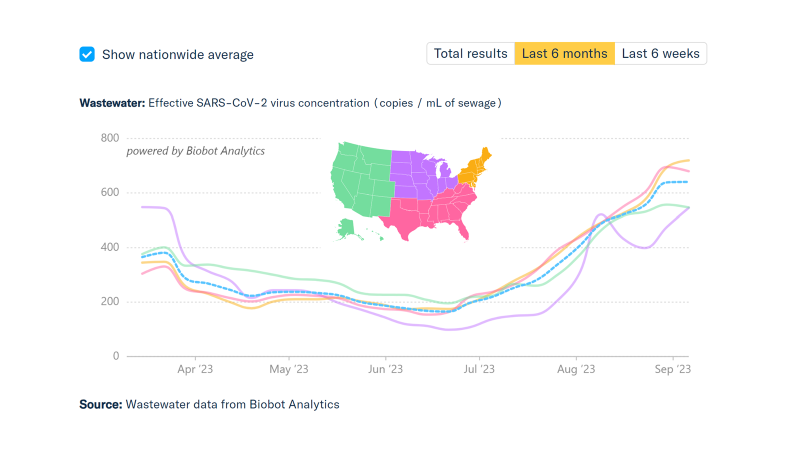If your county has Biobot #wastewater data, here's information on how to estimate the percentage of people in your area who are actively infectious.
Quick guide. 🧵
Here are a few examples to start.
1/

Quick guide. 🧵
Here are a few examples to start.
1/
https://twitter.com/michael_hoerger/status/1700376883009855542

If you're not mathematically inclined, use this table. Look up your county's #wastewater levels (on Biobot only, not other sites), and simply convert it to the % infectious estimate.
If wastewater levels are 1000 copies/mL, 3% of the county is infectious with C0VID.
2/
If wastewater levels are 1000 copies/mL, 3% of the county is infectious with C0VID.
2/

To precisely convert Biobot #wastewater levels to the % infectious, just take the Biobot levels and divide by 328. You'll get a percentage.
For example, national levels are at 641 copies/mL. 641/328 = 1.95. So, 1.95% of the U.S. is infectious.
3/
For example, national levels are at 641 copies/mL. 641/328 = 1.95. So, 1.95% of the U.S. is infectious.
3/

Caveats: Biobot attempts to normalize these estimates across geographic entities. You've probably seen regional comparisons before. Nothing is perfect, but these will give you some local estimates. The PMC model also makes assumptions about the infectious window, etc.
4/
4/

• • •
Missing some Tweet in this thread? You can try to
force a refresh

 Read on Twitter
Read on Twitter


















